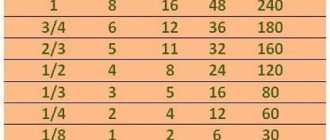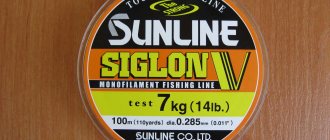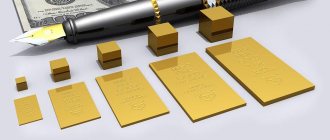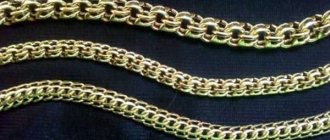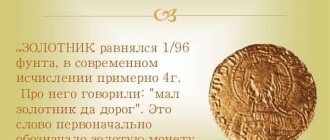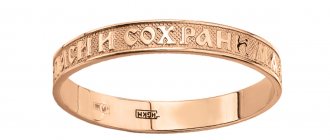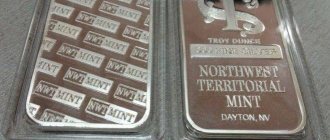For Russian users, the usual units of measurement are grams and kilograms. However, when trading with foreign countries, measurement system inconsistencies often arise. For example, when purchasing silver, the weight is indicated in ounces. Sometimes packages mention double markings - pounds are added. Here difficulties arise in converting foreign measures into native kilograms.
Historical unit of weight for jewelers and more
The name "Troy" was borrowed from trades near Champagne, in France. In the village of Troyes, trade was so active that over time the residents had a need to acquire their own unit of measurement of scales to clarify the cost of products. Taking as a basis the national currency of that time - the French livre, which included an ounce of silver, Troyes became the ancestor of a popular weight unit.
Initially, traders used a troy ounce of gold to measure grain crops and medicines - essential goods for all segments of the French population. Later, what a troy ounce was was learned not only in other regions of the country, but throughout the world, and the convenient weight “category” appealed to both jewelers and bankers.
The first official mention of the troy ounce (how many grams, designation and decoding of the concept) is given in the Great Oxford Dictionary of the 14th century. It states that a troy ounce is “a unit of measurement for precious metals and valuable medicines, as well as other goods, used to facilitate trade and settlements with customers, equal to 31.1034768 grams.”
Historians claim that during the Roman Empire, the system of weights and measures contained a value close to the modern troy ounce. The weight of the unit was closer to 28 g and more like the avoirdupois ounce used in England.
Ounce is mistakenly attributed to origin from the large city of "Troy", notorious to lovers of history and tales of heroes of the past. Contrary to popular belief, it has nothing to do with the Trojan Horse or the legends of that time.
Ounce in troy weights and measures
Gold, as the most popular of metals, is often measured using this unit. But the union is not the only “troy” measure of its kind - there are troy pound and grain. The smallest weight is gran, which means “grain” - 64.79892 mg. A troy ounce is 480 times larger in grams.
How much does a troy pound weigh? It is 12 times the value of an ounce, and if rounded to whole numbers, it is equal to 373 g.
Unlike other units of measurement in the system, the ounce is used constantly to measure gold. Today, not a single banking institution that sells elite gold coins can do without it. When weighing medications, pharmacists use the same units in grams as in the troy counting system.
Kilogram to Ounce Calculator
You convert weight from kilograms to ounces
Calculator - Weight and mass - Kilogram to Ounce
How many ounces are in a kilogram - oz equals kg
1 Kilogram (kg) = 35.2 Ounces (oz)
Kilograms The kilogram (symbol: “kg”), also known as kilo, is the basic measurement of mass in the International System of Units. Defined as a measure equal to the mass of the International Prototype Kilogram (IPK), it is related to the mass of almost one liter of water. It is the only basic unit of measurement that uses the prefix (“kilo”, symbol: “k”) as part of its name. The kilogram is very stable, which is really important, since 4 of the 7 basic units of the international system are directly related to the kilogram.
Ounces An ounce (abbreviation: "oz") is a unit of mass that has several definitions. Often an ounce is equal to 28 grams. Its size may vary in different systems. Today, the most widely used international ounces are avoirdupois, equal to 28.3495231 grams, and troy ounces, equal to 31.1034768 grams.
Conversion of units of Weight and Mass
Convert from
Convert to
kg
=
oz
| Basic units of weight | |
| Carat | car |
| Gram | gr |
| Kilogram | kg |
| Milligram | mg |
| Ounce | oz |
| Lb | lb |
| Ton | T |
| Other units of mass | |
| Assarion | assarion |
| Atomic mass unit (Dalton) | A. eat. |
| Attogram | ag |
| Bekah | |
| Centigram | cg |
| Dalton | |
| Dg | dg |
| Dekagram | dag |
| Denarius | denarius |
| Didrachm | didrachma |
| Drachma | drachma |
| Dina | dyn |
| Exagram | Eg |
| Femtogram | fg |
| Hera | gerah |
| Gigagram | Gg |
| Grain | gr |
| Hectogram | hg |
| Hundredweight | cwt |
| Hundredweight(UK) | cwt |
| Kip | |
| Mite | lepton |
| Megagram | Mg |
| Microgram | µg |
| Mine | mina |
| Mina(Biblical Hebrew) | mina |
| Nanogram | ng |
| Pennyweight | pwt |
| Petagram | Pg |
| Picagram | pg |
| Poundal | pdl |
| Quadrant | quadrans |
| Quarter | |
| Quarter(UK) | quarter |
| Quintal | quint. |
| Scruple | scr |
| Shekel | shekel |
| Slug | |
| Stone | st |
| Stone(UK) | st |
| Talent(Greek) | |
| Talent(Hebrew) | |
| Teragram | Tg |
| Tetradrachm | tetradrachma |
| Ton | |
| English ton | |
| Troy ounce | |
| Pharmacist's pound | |
| Basic units of weight | |
| Carat | car |
| Gram | gr |
| Kilogram | kg |
| Milligram | mg |
| Ounce | oz |
| Lb | lb |
| Ton | T |
| Other units of mass | |
| Assarion | assarion |
| Atomic mass unit (Dalton) | A. eat. |
| Attogram | ag |
| Bekah | |
| Centigram | cg |
| Dalton | |
| Dg | dg |
| Dekagram | dag |
| Denarius | denarius |
| Didrachm | didrachma |
| Drachma | drachma |
| Dina | dyn |
| Exagram | Eg |
| Femtogram | fg |
| Hera | gerah |
| Gigagram | Gg |
| Grain | gr |
| Hectogram | hg |
| Hundredweight | cwt |
| Hundredweight(UK) | cwt |
| Kip | |
| Mite | lepton |
| Megagram | Mg |
| Microgram | µg |
| Mine | mina |
| Mina(Biblical Hebrew) | mina |
| Nanogram | ng |
| Pennyweight | pwt |
| Petagram | Pg |
| Picagram | pg |
| Poundal | pdl |
| Quadrant | quadrans |
| Quarter | |
| Quarter(UK) | quarter |
| Quintal | quint. |
| Scruple | scr |
| Shekel | shekel |
| Slug | |
| Stone | st |
| Stone(UK) | st |
| Talent(Greek) | |
| Talent(Hebrew) | |
| Teragram | Tg |
| Tetradrachm | tetradrachma |
| Ton | |
| English ton | |
| Troy ounce | |
| Pharmacist's pound | |
Conversion result:
Other popular mass and weight calculators
- Carat to Gram
- Carat to Kilogram
- Carat to Milligram
- Carats to Ounces
- Carat to Pound
- Carats to Tons
- Gram to Carat
- Gram to Kilogram
- Gram to Milligram
- Gram to Ounce
- Gram to Pound
- Grams to Tons
- Kilogram to Carats
- Kilograms to Grams
- Kilogram to Milligram
- Kilograms to Ounces
- Kilogram to Pounds
- Kilogram to Tons
- Milligram to Carat
- Milligram to Gram
- Milligram to Kilogram
- Milligram to Ounce
- Milligrams to Pounds
- Milligrams to Tons
- Ounce to Carats
- Ounce to Gram
- Ounce to Kilogram
- Ounce to Milligram
- Ounce to Pound
- Ounce to Ton
- Pound to Carat
- Pound to Gram
- Pound to Kilogram
- Pound to Milligram
- Pound to Ounce
- Pound to Tons
- Ton to Grams
- Ton to Kilos
- Ton to Milligrams
- Ton to Ounces
- Ton to Pounds
Avoirdupois ounce - troy ounce: what are the differences?
When measuring precious metals and not only similar units of scales can be used, differing not only in name. 1 troy ounce is not equal in weight to an avoirdupois - an “ordinary” ounce, which is almost 10% lighter than the English scale measure. How to recognize them?
Averdupois weighs 28.3495 g and does not belong to the troy measurement system. It is considered an English unit of scale, and is still used for weighing goods in the UK and US even in 2017. European states traditionally adhere to the troy system of weights and measures as a unit of calculation for gold and other valuable elements.
A little history
The term "ounce" originated in ancient Rome. This universal value could give an idea of length, surface, capacity or monetary equivalent. In medieval Europe it was firmly established as a unit of measurement of weight.
In the modern world, it has come into use in countries where it is customary to measure cargo in pounds, for example, England.
Its prototype is also used, which is called Troy, it is widely used in commerce for precious metals. There are also the following subtypes - liquid, apothecary and avoirdupois.
London fixing and price per ounce
The number of people wishing to make money on precious metals quotes is growing every day, and this is no coincidence: gold, unlike reserve currencies, is a highly liquid asset that is characterized by constancy. As of April 1, 2021, an ounce of gold was equivalent to 1251.4 US dollars. The first mention of setting prices per ounce in the troy system dates back to 1790 - then in the United States they asked for a little more than $19.
Traditionally, gold fixing is set by the London Stock Exchange twice a day. You can track your indicators online. In the Russian Federation, Sberbank and the Central Bank daily publish data on changes in quotations of currencies and precious metals.
Interesting statistics: according to analysts’ calculations, the growth in the cost of precious metals is influenced not only by economic indicators within states and the foreign policies of countries, but also by the psychological situation. Donald Trump's statements in December this year contributed to the positive dynamics of gold prices. The status as of March 3, 2021 characterizes the average monthly price of the precious metal.
Units
Kilogram
In the SI system, mass is expressed in kilograms. The kilogram is determined based on the exact numerical value of Planck's constant h
, equal to 6.62607015×10⁻³⁴, expressed in J s, which is equal to kg m² s⁻¹, with the second and meter being determined by the exact values of
c
and Δ
ν
Cs. The mass of one liter of water can be approximately considered equal to one kilogram. The derivatives of kilogram, gram (1/1000 of a kilogram) and ton (1000 kilograms) are not SI units, but are widely used.
Electron-volt
Electronvolt is a unit for measuring energy. It is usually used in the theory of relativity, and energy is calculated using the formula E
=
mc²
, where
E
is energy,
m
is mass, and
c
is the speed of light.
According to the principle of equivalence of mass and energy, an electronvolt is also a unit of mass in the system of natural units, where c
is equal to one, which means mass equals energy. Electrovolts are mainly used in nuclear and atomic physics.
Atomic mass unit
Atomic mass unit ( a.u.m.
) is intended for masses of molecules, atoms, and other particles. One a. e.m. is equal to 1/12 the mass of a carbon nuclide atom, ¹²C. This is approximately 1.66 × 10 ⁻²⁷ kilograms.
Slug
Slugs are used primarily in the British Imperial system in Great Britain and some other countries. One slug is equal to the mass of a body that moves with an acceleration of one foot per second per second when a force of one pound-force is applied to it. This is approximately 14.59 kilograms.
The mass of the Sun is 1.9884×1030 kg
Solar mass
Solar mass is a measure of mass used in astronomy to measure stars, planets and galaxies. One solar mass is equal to the mass of the Sun, that is, 2 × 10³⁰ kilograms. The mass of the Earth is approximately 333,000 times less.
Carat
Carats measure the weight of precious stones and metals in jewelry. One carat is equal to 200 milligrams. The name and the size itself are associated with the seeds of the carob tree (in English: carob, pronounced “carob”). One carat used to be equal to the weight of the seed of this tree, and buyers carried their seeds with them to check whether they were being deceived by sellers of precious metals and stones. The weight of a gold coin in Ancient Rome was equal to 24 carob seeds, and therefore carats began to be used to indicate the amount of gold in the alloy. 24 karat is pure gold, 12 karat is half gold alloy, and so on.
Soft metric weight labeling on food products in Canada
Grand
The grain was used as a measure of weight in many countries before the Renaissance. It was based on the weight of grains, mainly barley, and other popular crops at the time. One grain is equal to about 65 milligrams. This is a little more than a quarter of a carat. Until carats became widespread, grains were used in jewelry. This measure of weight is still used to this day to measure the mass of gunpowder, bullets, arrows, and gold foil in dentistry.
Other units of mass
In countries where the metric system is not adopted, the British Imperial system is used. For example, in the UK, USA and Canada, pounds, stones and ounces are widely used. One pound is equal to 453.6 grams. Stones are used mainly only to measure human body weight. One stone is approximately 6.35 kilograms or exactly 14 pounds. Ounces are primarily used in cooking recipes, especially for foods in small portions. One ounce is 1/16 of a pound, or approximately 28.35 grams. In Canada, which formally adopted the metric system in the 1970s, many products are sold in rounded imperial units, such as one pound or 14 fluid ounces, but are labeled with weight or volume in metric units. In English, such a system is called “soft metric ”
), in contrast to the “hard metric” system (English
hard metric
), in which the rounded weight in metric units is indicated on the packaging. This image shows "soft metric" food packaging with weight in metric units only and volume in both metric and imperial units.
Bibliography
Author of the article: Kateryna Yuri
Modern standards and tribute to the past
In jewelry stores you will not find jewelry for which the price of gold is indicated based on the value of an ounce as a weight measurement system. Today, the function of the troy ounce of gold largely depends on the memory and historical role of the term. It now serves as the standard of royal gold purity standards - it is used to measure the weight of precious commemorative coins issued by the central banks of leading states. In Russia, the weight of a troy ounce is used for the comparative assessment of the St. George the Victorious coin, equal to ¼ of a unit in grams. The denomination of the commemorative gold coin is 50 rubles.

